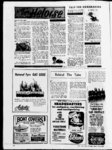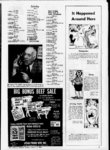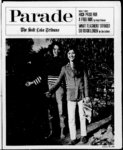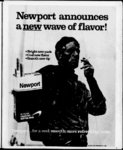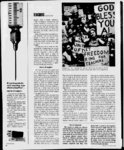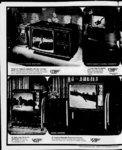| OCR Text |
Show o Section E Sunday Morning, January 26, ICG!) r ' . T' Heavy industry in tlie Intermountain Region is typified by U.S. Steel Corp.s new heavy-gaug- e shear line which went into production during 1968 at Geneva Works (at left). The petroleum industry began an upward swing last year with development of fabulous new production at the Blue- - in Duchesne County. Huge pump-jacis located at Bluebell. Aerial new shows sprawling ore processing mill under construction near Delta, Utah, as part of new $10 million Brush Beryllium Co. complex including 4, mining pit in Juab County. liell Field k (above) (below) UOO-fo- ot By Robert H. Woody Tribune Business Editor The Bureau of Mines has pegged Utahs 1968 resources production at 424 million dollars up 19 per cent over 1967. A winner? Not necessarily so. Strike cut badly into Utahs 1967 minerals production. Kenr.e-eoCopper Corp., the mining giant in Utah, was shut down for a lt half-yea- r. of Anacondas International Smelting & RefinHie lead-zin- c ing Co. plant at Tooele closed off smelting outlet for concentrates produced by other Utah firms. The strike cut into about quarter of 1968. Comparatively 1966 was a normal year and minerals procoal and oil and gas tallied duction metallics, out at 446 million dollars. shut-dow- n Normal Year Shaping I'p As for 1969, a basically normal year is shaping up. And best guess is that minerals production in the state will hit upward of half a billion dollars in 1969, says Paul Rattle, manager of the Utah Mining Assn. However, there may be some economic discomfort ahead for particular minerals operations. These films will be liigldy sensitive to increased operating or tax costs. Some are essentially untried: those in beryllium and in Great Salt Lake brines recovery projects. Others, in lead-zinhave had to cope with softened lead prices. One firm rlosed down its Salt Lake vanadium pentoxide plant because of the depressed market. Stauffer Chemical Co. has its phosphate mining properties north of Vernal, .vet to also closed down as an indirect casualty of the copper strike. But on the bright side, it will be a year of labor peace in copper and steel the two major mining and processing presences in A c re-op- Utah. Prograins First Mill Year Utah Copper Divisions $100 million Kennecott's Importantly, expansion and improvement program will have a full year of Expansion effect in 1969. Estimates are that Kennecott will produce some 313.000 tons of cppxr in Utah a record. It will be tlie first time Kemiecott has eclipsed the 300,000-tonmark since 1942. The handicap oil produc tion has been declining ore grade. Twenty-siyears ago, tlie division stripped away 133 tons of s overburden for each ton of copper produced. Now, it is necessary to remove 289 tons of overburden for each ton of copper, Tlie expansion program enables man and machine to remove far higher tonnages than in 1942. By the end of the year, with the new facilities fully in tune, the Utah Copper Division was turning out record daily, weekly and monthly produrtion. On wot id basis the outlook for copper is good. There is strong U.S. demand and good demand abroad on the Continent and in Japan. steel's outlook. Geneva Works of U.S. Steel Corp. faces tlie growing imports of Japanese steed on its prime West Coast market area. Japanese steel now takes 25 percent bite of tlie Western market. One of the things the Johnson Adininistiation Imped to do before leaving office was to work out some sort of agreement will) foreign producers to voluntarily limit choir exports to the U.S. And there are reports that tlie Japanese and European steelmakers have informally agreed to limit shipments to tlie U.S. As for See S' N rage ? E-- Column ft . it-.-, . 1 4 4 A i - |




































































































































